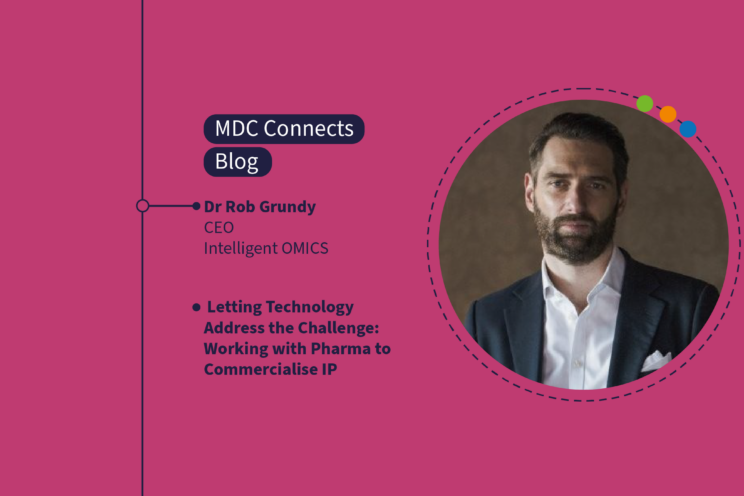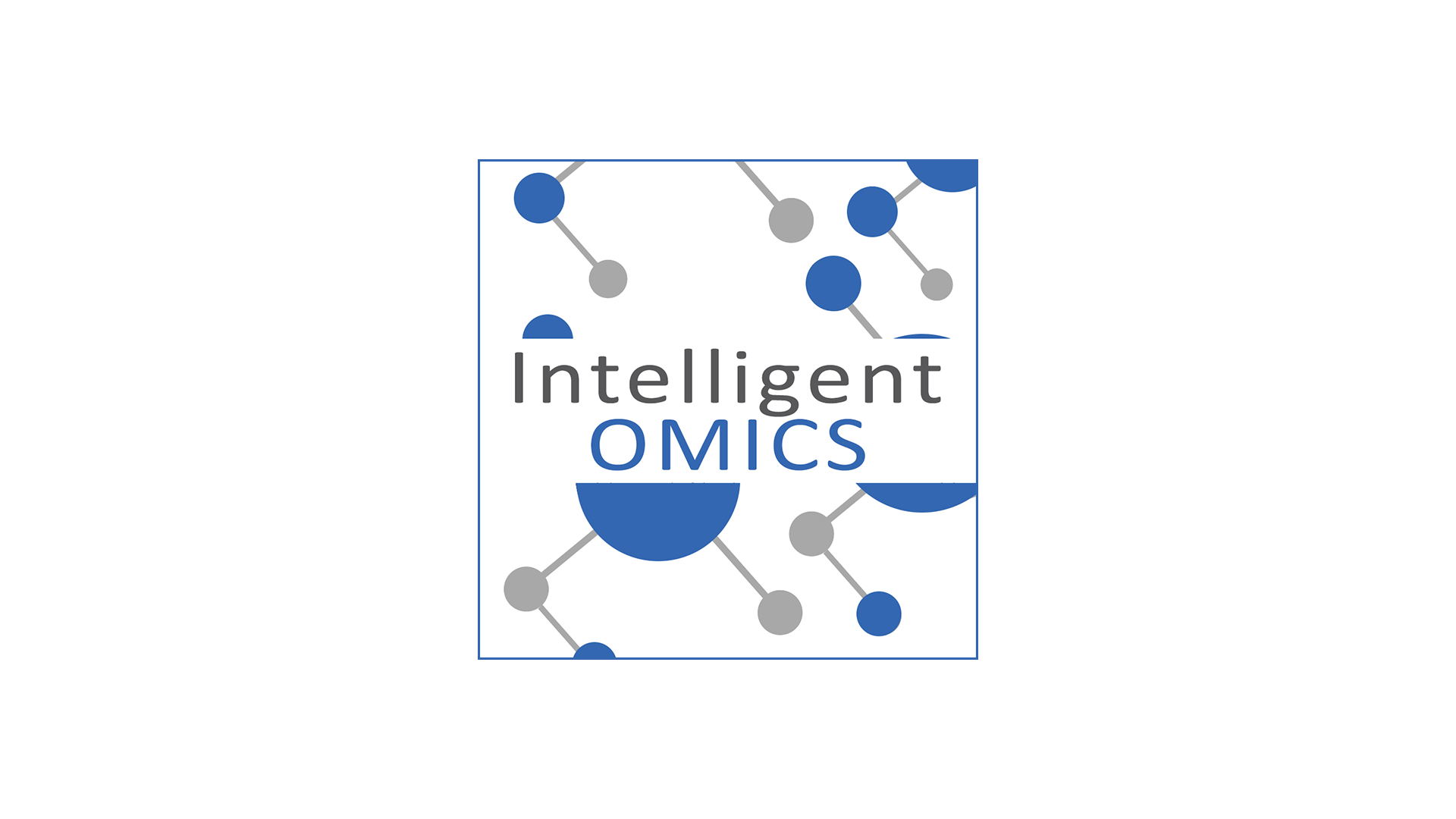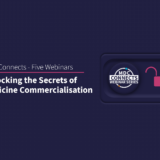Letting Technology Address the Challenge: Working with Pharma to Commercialise IP
Dr Rob Grundy, CEO, Intelligent OMICS
12 June 2024


This blog focuses on commercialising innovation from small companies engaged in bringing forward assets, platforms and services – to the right people, in the right areas, at the right time.
Be Driven by the Problem…
It is a very simple fact: an invention specifically designed to solve a problem is far more likely to succeed than creating an innovation, then looking for a problem it can solve.
The best start point for inspiration is studying in detail specific challenges that specific disciplines face. Novel ideas conceived from this knowledge can have real value built-in from Day One.
Looking across pharma and biotech today, innovators will find an array of challenges within:
- Therapeutics – for example, oncology, fibrotic disease, neuroscience
- Platform needs – such as antibody drug conjugate (ADC) technologies, protein-protein interactions
- Bottlenecks – addressing ‘pinch-points’ in processes and practices, like patient recruitment technologies or manufacturing advanced therapies
Whatever the problem you want to overcome, it is vitally important to confirm its validity and significance through customer discovery. From this stance your asset will be clearly positioned as a ‘perfect fit’ solution to a problem that is holding a given organisation back.
Articulate Your Solution in the Context of the Problem
For example, a common problem is that drug discovery is often characterised by expense and time-consuming failure.
The solution in this context could be an innovation that will allow a better understanding of disease biology without bias from previous literature, and facilitate selecting causal, stable targets present across a disease population. So this asset or service clearly promises a more optimal drug discovery process by addressing the root of the specific problem.
The Commercialisation Conundrum
The question start-ups and spin-outs have to address is: what business model do we use to commercialise our asset?
Conventionally, early-stage companies usually consider two basic options:
- To share a discovery through a service – and generate revenue straight away. This is the short-term viability route
- To retain the asset and IP, develop it and reap the rewards in the long term. This will require raising investment to fund the journey to commercialisation
However there is a less binary choice; why not do both of the above in parallel strategically? For example, Intelligent OMICS generates near-term revenue by making its capability available to biotech and pharma, while also developing assets through collaborative research.
Route to Market
Reaching the right people who are facing the ‘right’ problem is essential in making your route to market as direct and efficient as possible.
Clearly, researching ‘who’s who’ in your target market is important, as is homing-in on the best channels to make your connections through. It could be an email route, exploiting Linkedin and other professional networks, or attending scientific or business partnering events. Having a clear understanding of who the buyer is will inform which channels you use. You may be seeking a scientific partner, a business development partner, or perhaps you need both.
An important directional differentiation in terms of business development or sales needs to be clarified. This is because you need to establish what resources will be needed to accommodate either approach.
It is also crucial to identify if yours will be recurring service revenue, or a one-off deal – different business models need to be applied for either case.
In the case of a licensing model, these can comprise differing structures; often the shape of a licensing deal and revenue delivery evolves through negotiations.
Intelligent OMICS’ AI-driven Drug Discovery Engine Collaboration with Johnson & Johnson
The partnership centred around applying Intelligent OMIC’s AI technology in J&J’s work on haematological malignancies therapies.
The deal was initiated via contact combining an email circular and the InPart platform. InPart enables companies like J&J to highlight a specific need for solutions providers to respond to. It is an effective way for providers to ‘cut to the chase’ and get their innovation exactly where it will be most relevant.
Subsequently, Intelligent OMICS’ team was integrated with the biology and data science teams at J&J, which proved to be mutually beneficial knowledge-enriching partnership. This also led to a wider awareness of Intelligent OMIC capabilities across J&J’s R&D organisation, and an invitation to join JLABS.
JLABS is the company’s initiative to bring its innovators together to share knowledge and experiences, to enable communication and dissemination via:
- CEO roundtables
- Community membership
- Industry validation
Working with Servier
Again, Intelligent OMICS contact in this case arose from an email circular summarising the company’s areas of expertise in AI-driven drug discovery.
As with Intelligent OMIC’s J&J collaboration, this ‘in’ led to close partnering with Servier’s biology and data science people, initially in the autoimmune disease area and subsequently in neuroscience therapeutics.
The partnership has involved working together to refine methodologies for both companies, and a publication submission is now on the way.
In Summary
Be sure your asset or service is presented in its most relevant light. Identifying the targets with problems that your innovation directly addresses helps secure the most promising contacts, quickly and efficiently.
Clearly, it is equally important to establish that your potential target or targets have appropriate budgets in place.
Existing relationships can often be leveraged to extend commercial partnerships within companies, so extending and maintaining those connections can be a very useful business tool.
Ultimately, delivering an asset or service that provides real value – consistently and continually – is the ideal from both the user’s and the provider’s perspectives.
Dr Rob Grundy, CEO, Intelligent OMICS
Hear more in episode five of the MDC Connects 2024 webinar series, ‘Unlocking the Secrets of Medicine Commercialisation’ here.






